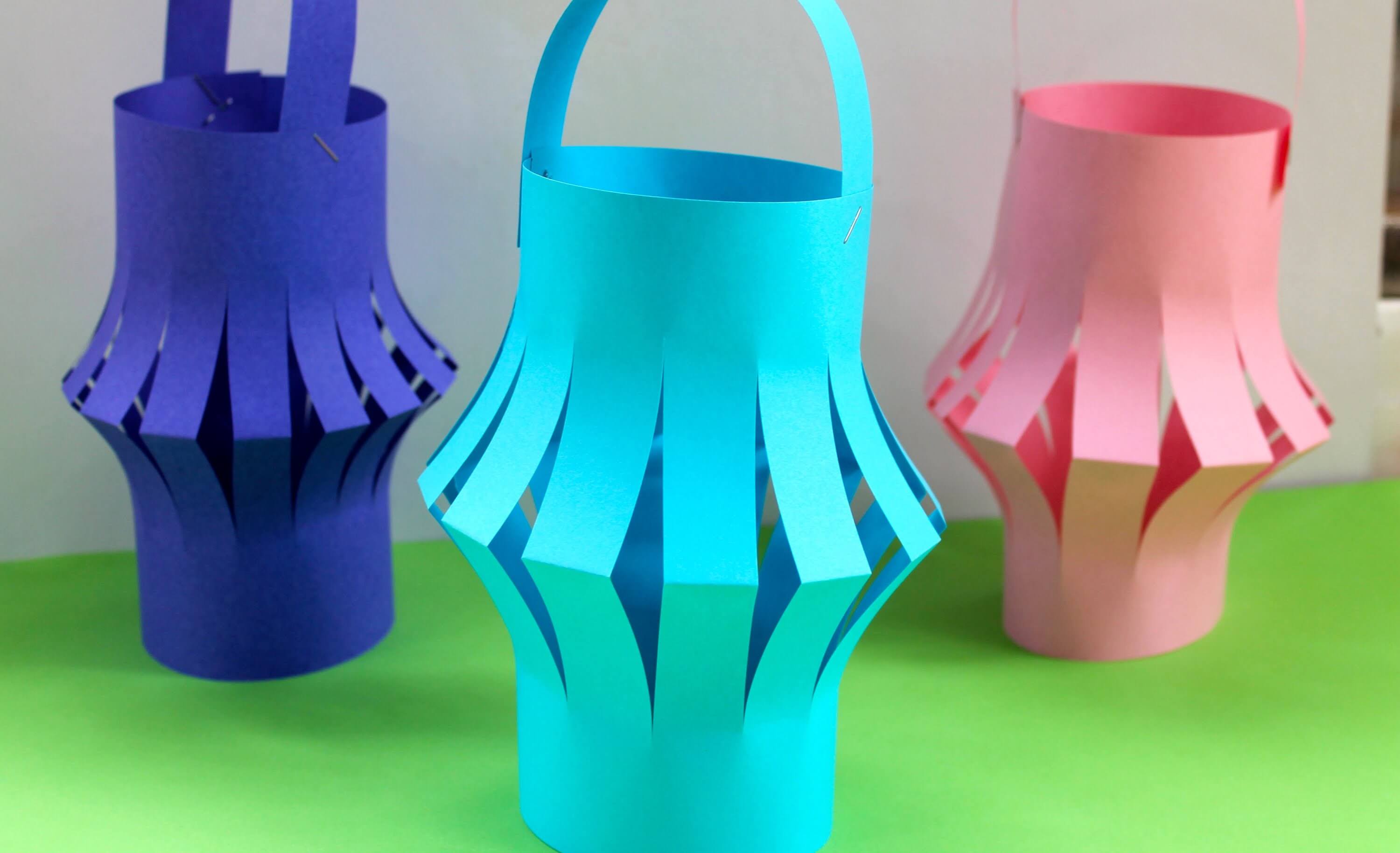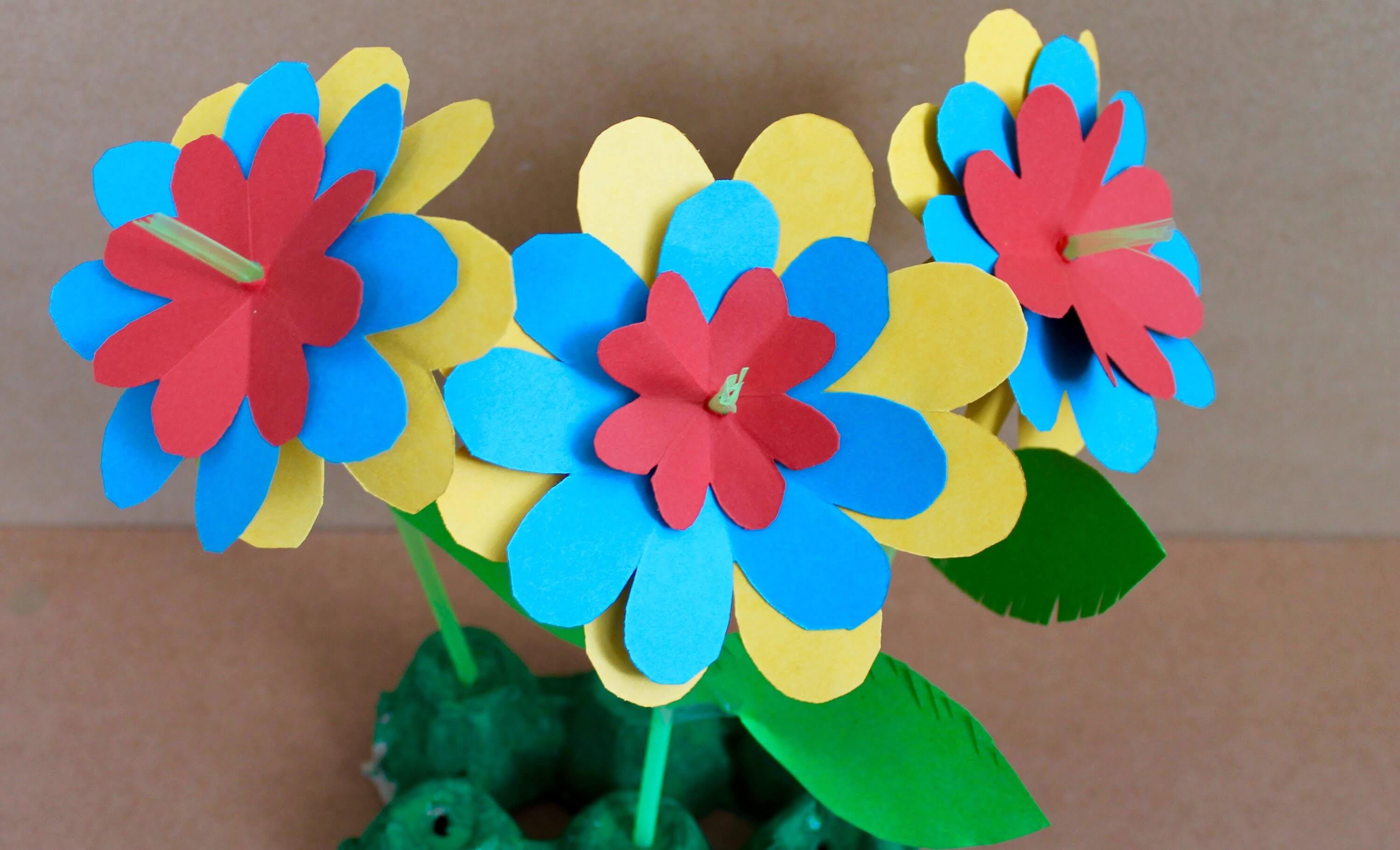DIY paper crafts for kids unleash a world of creativity, transforming simple paper into fantastical creations! From preschoolers gleefully crafting paper plate animals to older children mastering intricate origami, the possibilities are as boundless as a child’s imagination. Paper crafts are not only fun; they’re fantastic for developing fine motor skills, problem-solving abilities, and self-expression. Get ready to roll up your sleeves (and maybe a few paper scraps!) for a crafting adventure!
This guide dives into a treasure trove of paper craft ideas, categorized by age group and skill level. We’ll explore easy-peasy projects perfect for tiny hands, progressively challenging crafts for budding artists, and even eco-friendly options using recycled materials. We’ll also uncover the magic of incorporating storytelling and themes into your creations, turning ordinary paper into extraordinary narratives.
Prepare to be amazed by what you and your little ones can achieve together!
The Wonderful World of DIY Paper Crafts for Kids
Dive into a world of creativity, imagination, and endless fun with DIY paper crafts! Paper crafting is more than just a pastime; it’s a fantastic way for children to develop essential skills, express themselves, and unleash their inner artists. From toddlers to tweens, paper crafts offer a versatile and accessible creative outlet that caters to all ages and skill levels.
Get ready to unleash the paper power!
Benefits of Paper Crafts for Children
Paper crafts offer a plethora of benefits for children’s development. Younger children improve fine motor skills, hand-eye coordination, and problem-solving abilities through simple projects. Older children can explore more complex techniques, fostering creativity, patience, and spatial reasoning. The sense of accomplishment from completing a project boosts self-esteem and confidence, while the process itself encourages focus and concentration. Plus, it’s a screen-free activity that sparks imagination and provides hours of engaging fun!
Easy Paper Craft Ideas for Young Children (Ages 3-5)
These simple projects are perfect for little hands and short attention spans. Remember to adapt the complexity based on your child’s individual abilities and interests. Focus on the fun and the process, not the perfection of the final product!
| Craft Name | Materials Needed | Steps | Image Description |
|---|---|---|---|
| Paper Plate Animals | Paper plates, construction paper, glue, markers | Cut out shapes from construction paper (ears, tails, etc.) and glue them onto the paper plate to create an animal. Decorate with markers. | A vibrant paper plate transformed into a cheerful ladybug, with black dots meticulously placed on a red background and pipe cleaner antennae playfully sticking out. |
| Simple Paper Chains | Construction paper, scissors, glue | Cut construction paper into strips. Glue the ends of each strip to form a loop, then link the loops together to create a chain. | A colorful chain of interconnected paper loops, each loop a different bright hue, creating a cheerful and festive garland. |
| Handprint Flowers | Construction paper, paint, glue, green construction paper | Trace and cut out child’s handprints. Glue them to the center of a circle of green paper to create flower petals. Add a stem and leaves. | A bouquet of colorful handprint flowers, each petal a unique shade, arranged around a bright green stem, representing a joyful explosion of creativity. |
Tips for Adaptation: For children with shorter attention spans, break down projects into smaller, more manageable steps. Provide assistance with cutting and gluing as needed. For more advanced children, encourage them to add more details or create their own designs.
Intermediate Paper Craft Projects (Ages 6-8)
These projects introduce slightly more complex techniques and require greater precision and patience. They are designed to challenge children while still remaining engaging and fun.
- Paper Airplanes: Explore different airplane designs, experimenting with folds and wing shapes to see how they affect flight. Challenges might include precise folding; solutions involve practicing each fold individually before assembling the plane.
- Paper Fortune Tellers: Learn to create a fortune teller (also known as a cootie catcher) by folding and decorating paper. The challenge is the intricate folding; practice folding in half multiple times.
- Paper Masks: Design and create masks using various shapes and decorative elements. Challenges include cutting out intricate shapes; use scissors with rounded tips for safety and practice cutting simple shapes before moving to complex ones.
Advanced Paper Craft Ideas for Older Children (Ages 9-12)
These projects involve more intricate techniques and require greater dexterity and planning. They are perfect for older children who enjoy a challenge and want to explore more advanced paper crafting skills.
- Origami Animals: Learn to fold intricate origami animals, such as cranes or frogs. This requires precise folding and following detailed instructions. Start with simpler origami models before attempting more complex ones.
- Paper Quilling: Create decorative designs using rolled and shaped strips of paper. This requires patience and steady hands; practice rolling and shaping the paper strips before creating intricate designs.
- Paper Mache: Create three-dimensional objects using paper mache techniques. This requires patience and layering; start with a simple shape and gradually add layers to build the desired form.
These advanced projects require significantly more patience and precision than the simpler crafts for younger children. The techniques involved are more complex, and the final products often more intricate and detailed.
Utilizing Recycled Materials in Paper Crafts, Diy paper crafts for kids

Repurposing everyday items into creative crafts is a fantastic way to reduce waste and encourage environmental responsibility. This section showcases how to transform discarded materials into unique and fun paper crafts.
- Newspaper Flowers: Roll and shape strips of newspaper to create flower petals and leaves. Glue them together to form flowers and add a stem.
- Cardboard Box Creations: Transform cardboard boxes into houses, cars, or other imaginative structures. Decorate with paint, markers, and recycled materials.
- Junk Mail Collages: Cut and paste pieces of junk mail to create vibrant and textured collages. Experiment with different colors, textures, and shapes.
Using recycled materials reduces waste and promotes environmental awareness. It also encourages children to think creatively and find new uses for everyday objects.
Paper Craft Techniques and Skills

Exploring various paper craft techniques expands children’s creativity and develops their fine motor skills. This section introduces several popular techniques and their associated skill levels.
| Technique | Description | Difficulty Level | Example Project |
|---|---|---|---|
| Origami | Folding paper into decorative shapes and figures | Intermediate to Advanced | Origami crane |
| Paper Quilling | Creating designs using rolled and shaped strips of paper | Intermediate | Paper quilled flowers |
| Paper Mache | Creating three-dimensional objects using paper pulp and glue | Advanced | Paper mache mask |
Regular practice of these techniques enhances dexterity and fine motor skills. Start with simpler projects and gradually increase the complexity as skills develop.
Incorporating Storytelling and Themes into Paper Crafts
Integrating storytelling and themes into paper crafts adds another layer of engagement and creativity. This section presents projects inspired by popular children’s stories and themes.
- Farm Animals: Create paper farm animals (cows, pigs, sheep) and build a farm scene using cardboard boxes and other recycled materials. This project fosters imaginative play and storytelling.
- Under the Sea: Create paper fish, seaweed, and coral reefs. This project encourages creativity and exploration of marine life.
- Fairy Tale Characters: Create paper characters from popular fairy tales (e.g., Cinderella, Little Red Riding Hood). This project inspires creativity and storytelling.
Themed crafts enhance creativity and imagination by allowing children to express their understanding and interpretation of stories and themes through their artwork.
Displaying and Sharing Paper Craft Creations
Celebrating children’s creativity is crucial for boosting their self-esteem and encouraging further artistic exploration. This section provides ideas for displaying and sharing their artwork.
- Dedicated Craft Corner: Create a special space to display finished projects. This creates a sense of pride and accomplishment.
- Craft Exhibition: Organize a small exhibition to showcase children’s artwork to family and friends. This encourages sharing and celebrating creativity.
- Photo Documentation: Take photos of children’s creations to document their progress and artistic journey. This allows for reflection and appreciation of their work over time.
Celebrating children’s achievements reinforces their creativity and encourages them to continue exploring their artistic talents.
So, there you have it – a whirlwind tour of the wonderfully wacky world of DIY paper crafts for kids! From simple paper plate masterpieces to complex origami marvels, we’ve explored the diverse and delightful realm of paper crafting. Remember, the true magic lies not just in the finished product, but in the journey of creation itself. So gather your supplies, unleash your inner child (and your child’s inner artist!), and embark on a crafting adventure filled with laughter, learning, and loads of creative fun.
Happy crafting!
FAQ Section
How do I store finished paper crafts?
Use clear plastic sleeves or storage boxes to protect your creations. Consider labeling them with the child’s name and the date to preserve memories.
What if my child gets frustrated with a project?
Take a break! Crafting should be fun. Offer encouragement, suggest simplifying the project, or switch to a different activity altogether.
Where can I find more inspiration for paper craft projects?
Pinterest, YouTube, and craft blogs are brimming with ideas! Search for age-appropriate projects and let your imagination run wild.
Are there any safety concerns with paper crafts?
Obtain access to diy ideas for halloween costumes to private resources that are additional.
Always supervise young children with sharp tools like scissors. Choose age-appropriate projects and materials to prevent accidents.

